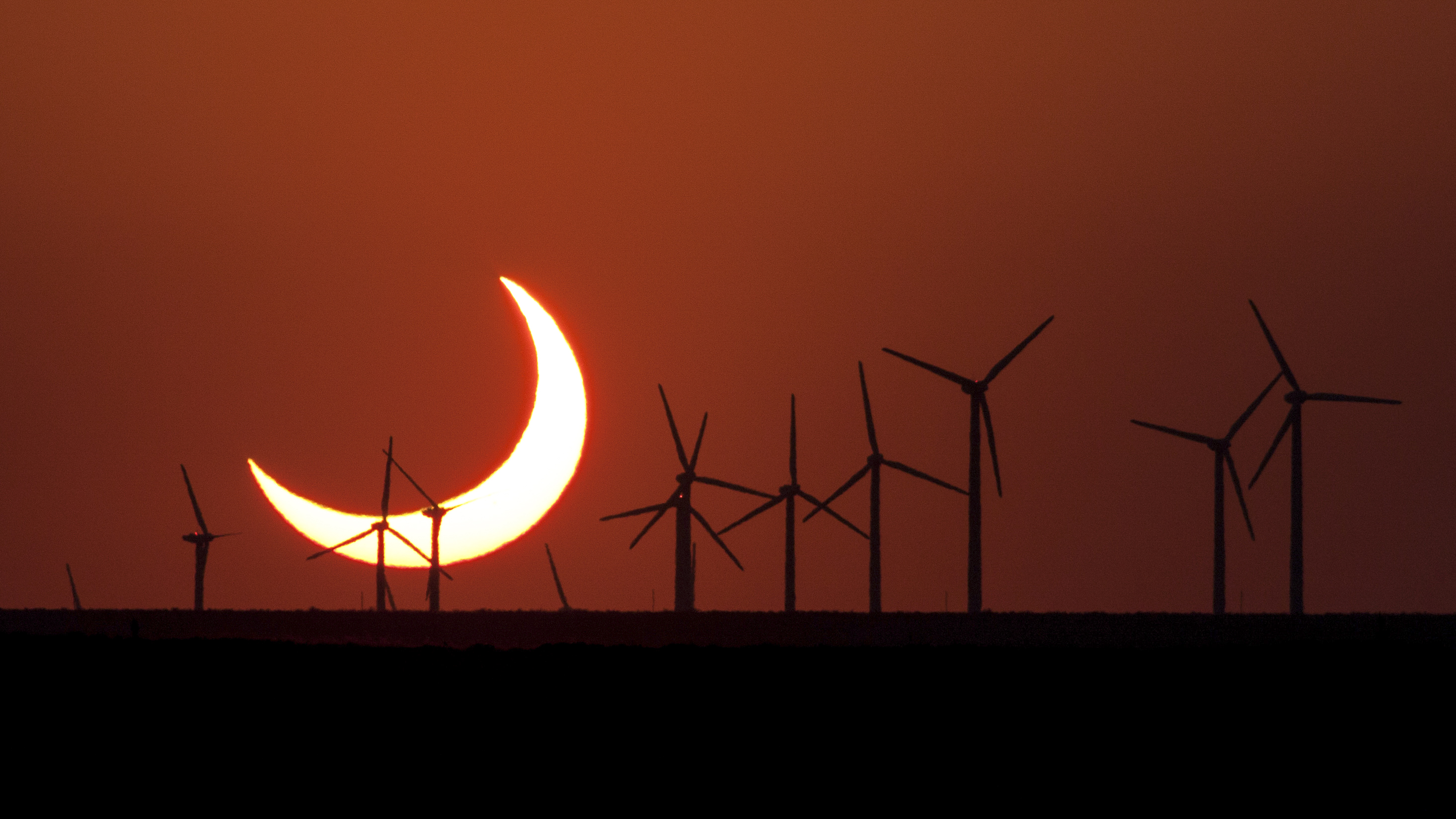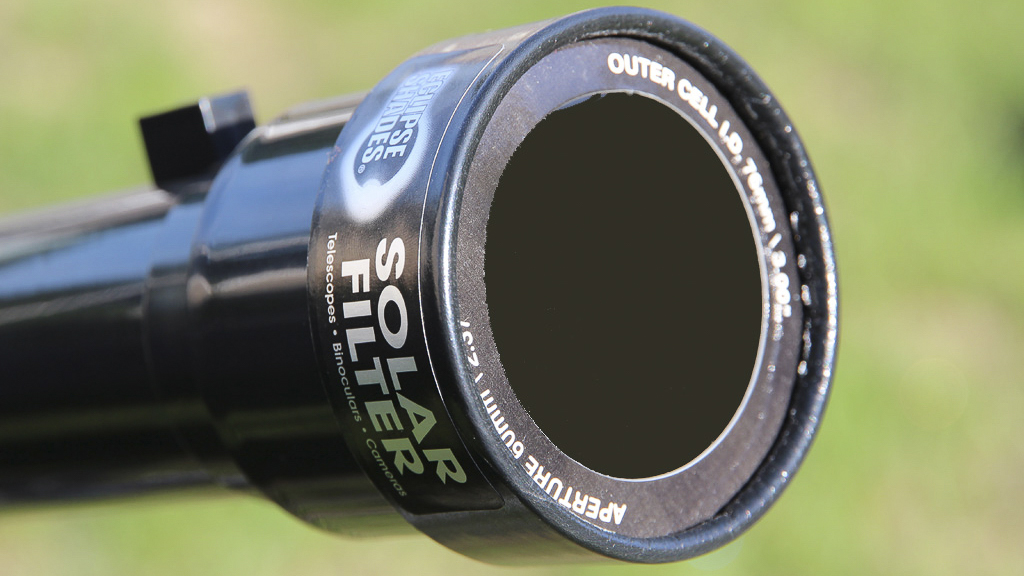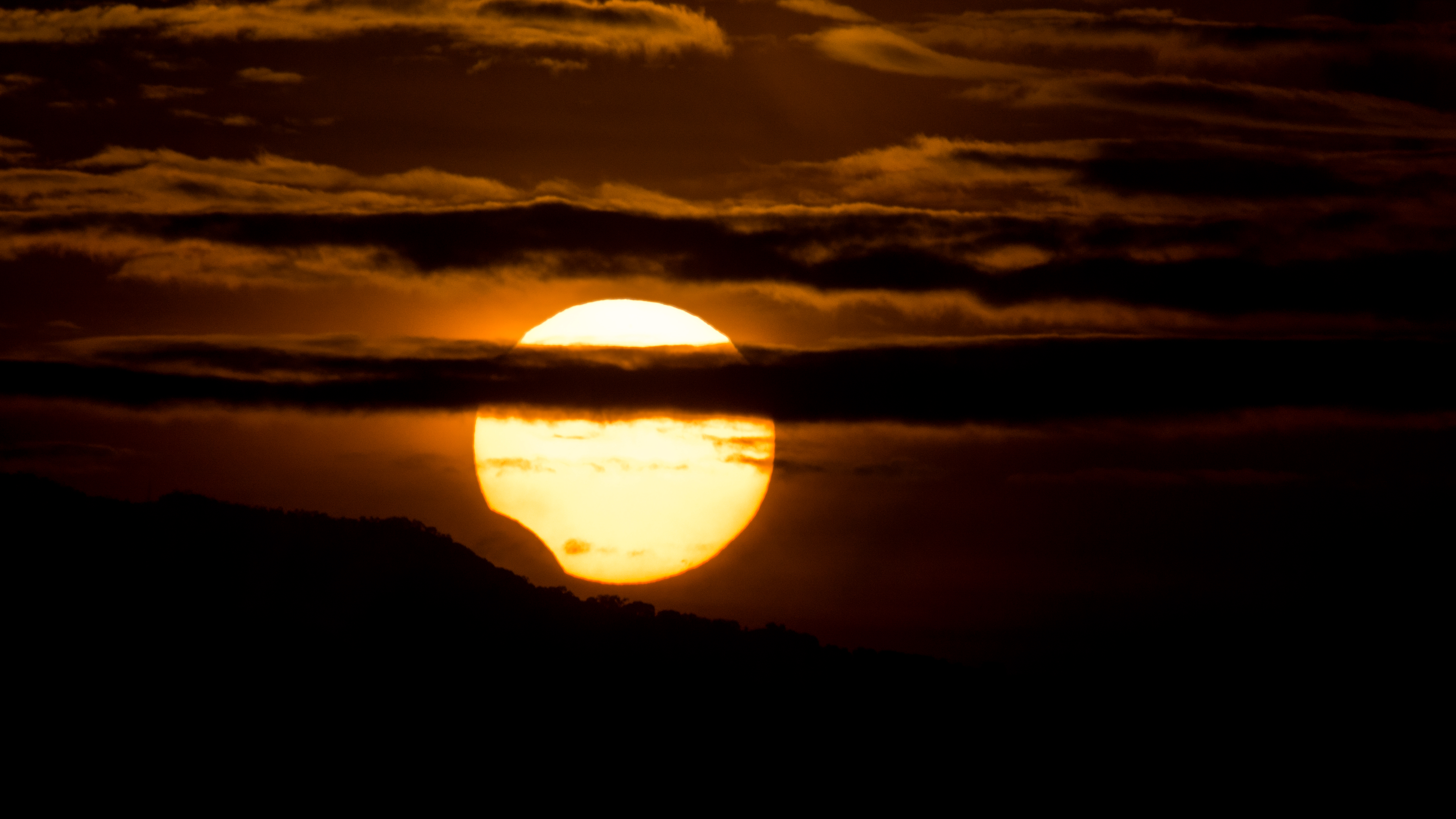How to photograph a Ring of Fire solar eclipse!
Everything you need to know about the solar eclipse visible from the northern hemisphere as the moon takes a bite from the sun

The northern hemisphere is about to get another solar eclipse. A common celestial event where a New Moon slips roughly between the Earth and the Sun, what happens on Tuesday, October 25, 2022 will nevertheless have astrophotographers out in force and hoping for clear skies. Visible across Eurasia – from Greenland to India – the Moon will appear to take a bite out of the Sun. Just how much of the Sun will be eclipsed by the Moon will depend on your location on the planet. Either way, a partial solar eclipse can only safely be viewed through solar eclipse glasses and photographed through solar filters.
What will you see from where you are? What do you need to think about if you want to photograph it? And how do you stay safe while trying to image the Sun? Here’s everything you need to know about the upcoming partial eclipse of the Sun …
• See How to photograph the moon
When and where is the solar eclipse?
As this map shows, the partial eclipse on Tuesday, October 25, 2022 will be visible from a huge swathe of the planet’s northern hemisphere including the Atlantic, Europe, Asia and northeast Africa. Since North America is on the night-side of Earth when the celestial alignment occurs no eclipse can be observed there. Visit Timeanddate.com and enter your location to find out exactly what you’ll see as well as local timings.
This partial solar eclipse’s maximum point will be Siberia, Russia where 82% of the Sun will be eclipsed by the Moon. The further west and south of that location, the smaller the maximum eclipse, but also at what time of day it occurs, which changes things for photographers. For example, in London there’s a 15% partial solar eclipse mid-morning, while in Iceland there will be a 22% eclipse during sunrise and in India’s western Himalayas a 50% eclipse at sunset.
The last partial solar eclipse in Europe was on June 10, 2021 and the next is on March 29, 2025, making this a fairly unusual event. It’s also a potentially dangerous event, especially for photographers.
Why you MUST use solar filters on your camera
The Sun’s infrared and ultraviolet rays are incredibly dangerous. At no point on October 25, 2022 will the Sun’s light be blocked anywhere near enough for observers to look at the event with unprotected eyes or equipment. You must use solar eclipse glasses to look at this event and put solar filters on the front of any telescope, binoculars or camera lens. Don’t look through your camera’s optical viewfinder; use the LCD screen.
The best camera deals, reviews, product advice, and unmissable photography news, direct to your inbox!
Solar filters from SeymourSolar, Thousands Oaks Optical and Baader are available, including options to purchase solar film so you can make your own filters. Traditional filter manufacturers such as LEE, Marumi, Hitech and Hoya also make special neutral density filters that are dark enough to use as solar eclipse filters.
Where, when and how to plan a shot of the solar eclipse
Unless you’re traveling to photograph this partial solar eclipse at sunrise or sunset – where a low horizon is obviously very important – then there are no special precautions to take aside from protecting your eyes and camera equipment. Europeans will see an eclipsed Sun reasonably high in the southeastern sky. For a more global understanding of what’s happening (and with handy links to PeakFinder so you can check out your horizon) consult this excellent interactive Google Map of this eclipse. The Photographer’s Ephemeris or PhotoPills can help you plan a shot in exquisite detail.
How to photograph the partial solar eclipse
Get hold of a white-light solar filter. If you don't then this project is a non-starter. It would also be helpful to get the longest telephoto lens you can find; 300mm will suffice, but 600mm is better (see best 150-600mm lenses). A 1.4x extender will bump up the focal length (see best teleconverters), but it may be at the cost of sharpness. Set the aperture to between f/5.6 and f/8. With your camera and long lens on a tripod, use your LCD screen on ‘live view’ to find the eclipsed Sun and then auto-focus on the edge of the Moon.
Put your camera into manual mode to lock that focus, set it to ISO 100 and try shutter speeds of between 1/500sec to 1/1000sec. Consider bracketing either side of 1/500sec). That’s some basic settings, but you’ll need to experiment – preferably beforehand – to learn what works for your camera and the sky conditions. Always shoot in the raw format, and use a shutter release or intervalometer so you can keep the entire rig perfectly still.
How to photograph the solar eclipse at sunrise
To capture the intrinsically odd-looking view of an eclipsed sun rising in the east the only location on land is western Iceland, where a partially eclipsed sun will rise in the southeastern sky and almost immediately reach its maximum of 20% obscuration when about 3º above the horizon. “If you are shooting the eclipse at sunrise, then the first requirement is a site with a flat, unobstructed horizon, perhaps with some scenic foreground feature if it's a unique photo you are after,” says Dyer. He advises scouting a site on the mornings prior to the eclipse to take test shots with the gear you plan to use, as the exposures on the mornings before the eclipse won’t be too different than on eclipse day if the weather is the same.
Even for the well prepared, this kind of eclipse shot is tricky. “Sunrise eclipses are a challenge, not only because of the high prospect of clouds or haze, but because the sun can be too bright to shoot well without a filter but too dim to shoot with a normal solar filter,” he adds. That solar filter is absolutely required for all stages of the eclipse once the Sun rises high enough to be at its normal brightness.
How to photograph the solar eclipse from the UK
Things are different in Europe, where all photographers will need a solar filter whatever the weather. In London the eclipse takes place between 10:08 am and 11:51 pm, peaking at 10:59 am when 15% of the Sun will be eclipsed. In Cardiff it’s 12% at 10:56 am, in Edinburgh it’s 19% at 10:55 am and in Belfast it’s 14% at 10:53am. It will all happen at an altitude of about 12º-20º, so reasonably high up in the southeastern daytime sky. Finding a low horizon won’t be necessary.
How to photograph the solar eclipse at sunset
To capture the view of an eclipsed sun setting in the west you’ll need to be in Siberia, central Asia or India. This partial solar eclipse’s maximum point near Nizhnevartovsk in Siberia will see 82% of the Sun eclipsed at sunset. Almaty, Kazakhstan will see a 69% eclipsed Sun set between a gap in the Tian Shan Mountains on the Kyrgyzstan border. However, expect to see the majority of eclipsed sunset images from northern India, from where Delhi (43%), Agra, home of the Taj Mahal (40%) and coastal Mumbai (24%) will see a similar event. If you’re going to be in any of these locations then a clear western or southwestern horizon will be crucial.
Future solar eclipses
If the weather doesn’t play nice, or it proves too technical, there’s always another eclipse. The next total solar eclipse occurs on April 8, 2023 with a rare kind of hybrid solar eclipse, though for eclipse-chasers inside a narrow path of totality that passes through Western Australia, Timor Leste and West Papua the 60 seconds+ totality will be just as impressive as during a regular total solar eclipse.
In North America there’s a ‘ring of fire’ annular solar eclipse on October 14, 2023 that crosses the southwest US states. Better still, on April 20, 2024 a total solar eclipse will blast across North America.
Jamie Carter is editor of WhenIsTheNextEclipse.com

Jamie has been writing about photography, astronomy, astro-tourism and astrophotography for over 15 years, producing content for Forbes, Space.com, Live Science, Techradar, T3, BBC Wildlife, Science Focus, Sky & Telescope, BBC Sky At Night, South China Morning Post, The Guardian, The Telegraph and Travel+Leisure.
As the editor for When Is The Next Eclipse, he has a wealth of experience, expertise and enthusiasm for astrophotography, from capturing the moon and meteor showers to solar and lunar eclipses.
He also brings a great deal of knowledge on action cameras, 360 cameras, AI cameras, camera backpacks, telescopes, gimbals, tripods and all manner of photography equipment.







